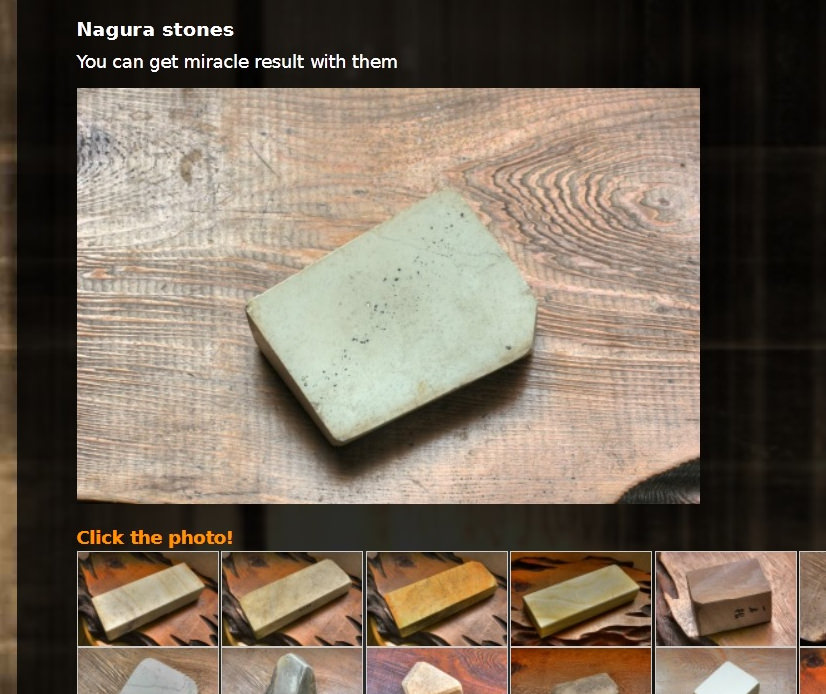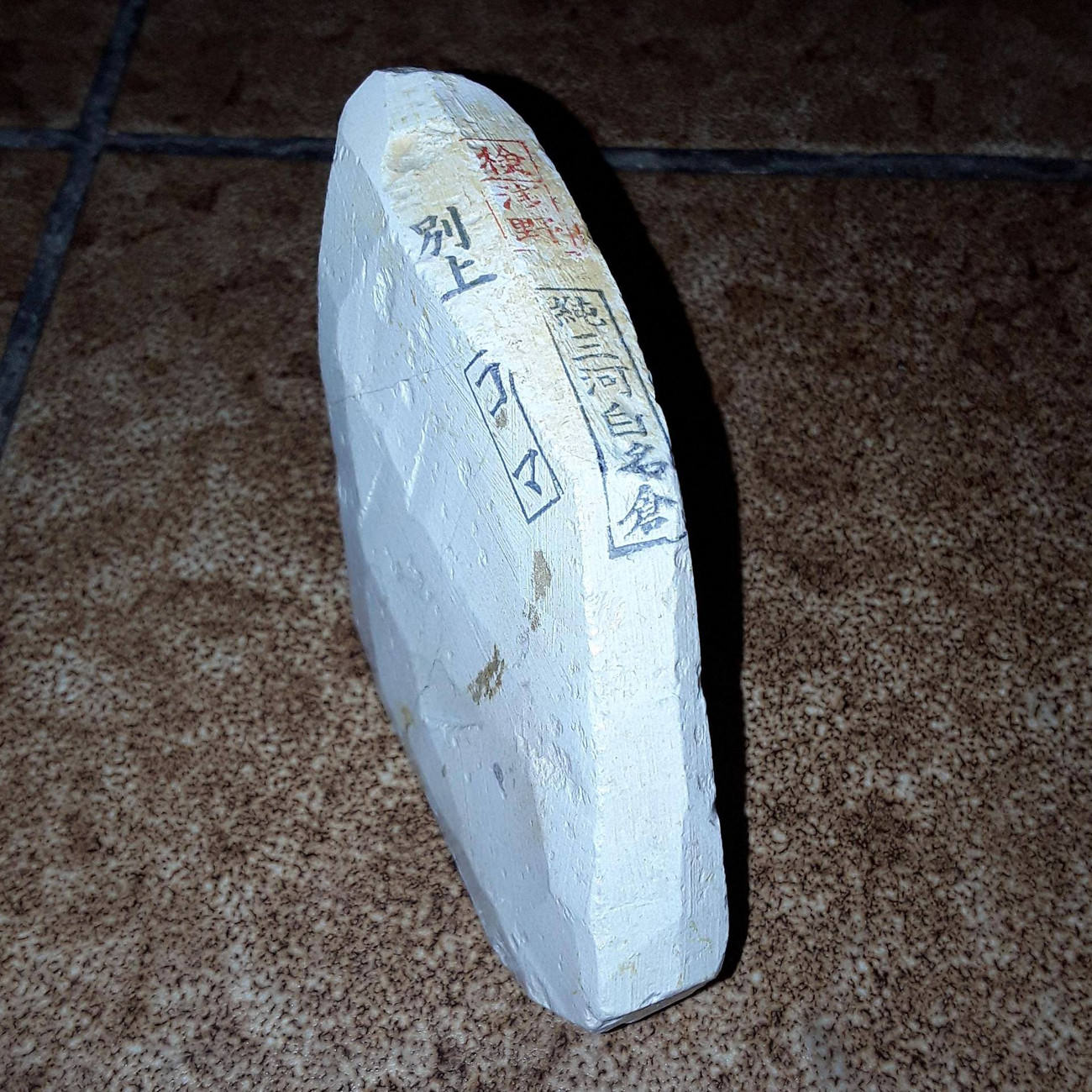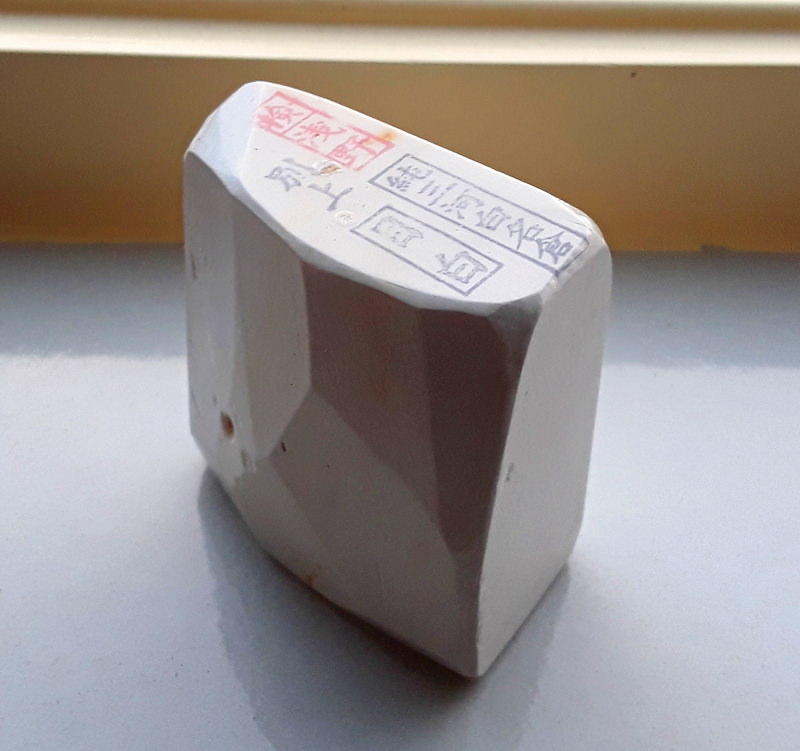So what this guy meant was two-body vs three-body-abrasion. With two-body-abrasion there's a fixed abrasive, the stone, and you continually have to rinse it so avoid the build up of mud so the steel is always in full contact with the abrasive for the most aggressive sharpening action. With three-body-abrasion there's a free floating abrasive on the surface of the stone, a slurry or mud, and the abrasive particles are free to roll around under the steel for the most aggressive sharpening action. There's no general consensus among scientists and engineers which is better but using a nagura slurry on my suita I can say from experience, and I think a lot of others can as well, that three-body-abrasion is more aggressive.
Btw, another nagura, this one is from the Mejiro stratum. It was just 30 (50 with shipping so I just took a chance) on Yahoo auctions for 237 grams and it's superb. Soft and very easy to make a slurry with it and fast cutting. I don't know if it's really checked by Asano but it works so well that I don't care.








